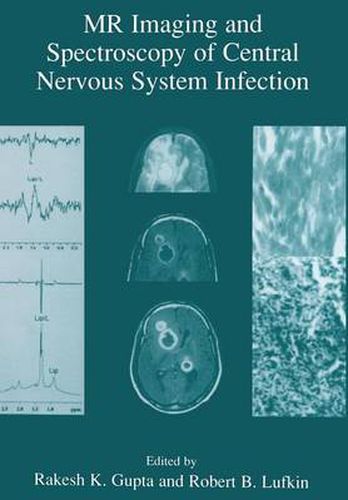Readings Newsletter
Become a Readings Member to make your shopping experience even easier.
Sign in or sign up for free!
You’re not far away from qualifying for FREE standard shipping within Australia
You’ve qualified for FREE standard shipping within Australia
The cart is loading…






This title is printed to order. This book may have been self-published. If so, we cannot guarantee the quality of the content. In the main most books will have gone through the editing process however some may not. We therefore suggest that you be aware of this before ordering this book. If in doubt check either the author or publisher’s details as we are unable to accept any returns unless they are faulty. Please contact us if you have any questions.
Central nervous system (CNS) infections continue to pose a serious problem in health care even with improved knowledge and treatment. Despite the introduction of newer antimicrobial agents and diagnostic techniques, the morbidity and mortality associated with CNS infections remain high. The morbidity associated with CNS infections may be even more important than the death rate especially in developing countries as neurological sequelae may deprive the survivors of intellect and physical ability, demeaning the quality of life and burdening health resources and social services. MR imaging is an important integral part of the protocol for the management of CNS infections and MR spectroscopy is increasingly being utilized in its management. This work is an attempt to provide a comprehensive review of imaging and spectroscopy of the commonly encountered CNS infections in the clinical practice in developing and developed countries. The first chapter deals with basic physical principles of MR imaging and spectroscopy that will help beginners to understand the technical terms used in subsequent chapters. The remaining 10 chapters deal with clinical, pathological, MR imaging and spectroscopy features and their applications in CNS infections. This will help in giving a comprehensive understanding to readers with a background in clinical, radiological, basic MRI, and neurological sciences. The T2 hypointense lesions are a real diagnostic dilemma especially in developing countries for which an algorithm has been suggested in the concluding chapter.
$9.00 standard shipping within Australia
FREE standard shipping within Australia for orders over $100.00
Express & International shipping calculated at checkout
This title is printed to order. This book may have been self-published. If so, we cannot guarantee the quality of the content. In the main most books will have gone through the editing process however some may not. We therefore suggest that you be aware of this before ordering this book. If in doubt check either the author or publisher’s details as we are unable to accept any returns unless they are faulty. Please contact us if you have any questions.
Central nervous system (CNS) infections continue to pose a serious problem in health care even with improved knowledge and treatment. Despite the introduction of newer antimicrobial agents and diagnostic techniques, the morbidity and mortality associated with CNS infections remain high. The morbidity associated with CNS infections may be even more important than the death rate especially in developing countries as neurological sequelae may deprive the survivors of intellect and physical ability, demeaning the quality of life and burdening health resources and social services. MR imaging is an important integral part of the protocol for the management of CNS infections and MR spectroscopy is increasingly being utilized in its management. This work is an attempt to provide a comprehensive review of imaging and spectroscopy of the commonly encountered CNS infections in the clinical practice in developing and developed countries. The first chapter deals with basic physical principles of MR imaging and spectroscopy that will help beginners to understand the technical terms used in subsequent chapters. The remaining 10 chapters deal with clinical, pathological, MR imaging and spectroscopy features and their applications in CNS infections. This will help in giving a comprehensive understanding to readers with a background in clinical, radiological, basic MRI, and neurological sciences. The T2 hypointense lesions are a real diagnostic dilemma especially in developing countries for which an algorithm has been suggested in the concluding chapter.